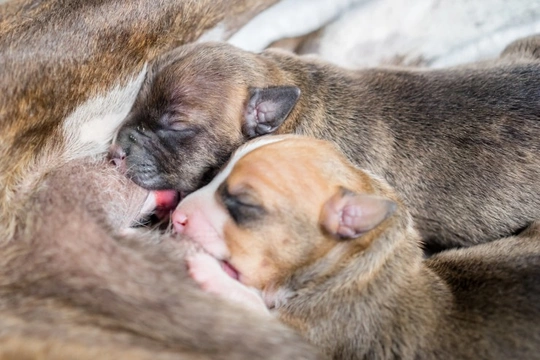
Eight interesting facts about canine pregnancy and nursing that you might not already know
Thanks to efforts over the last few decades to encourage dog owners to spay and neuter their pets and not to allow them to breed unchecked, canine pregnancy today is usually deliberately achieved and carefully planned, to ensure that the subsequent litters are wanted and have the best chances of being healthy and good examples of their breeds.
This means that most dog owners have never cared for a pregnant dam or been present to see pups being born, and so, there are a lot of things about the whole process of mating, gestation, delivery and caring for the pups that most dog owners aren’t even aware of!
If you are planning to breed from your dog or buy a puppy, or just want to learn more about some of the most fascinating facets of canine reproduction that you might not already know about, read on to learn eight interesting facts about canine pregnancy and nursing.
Domestic dogs have higher fertility levels than their wild ancestors
Dogs have been mating and delivering their own young for millennia without the need for human assistance, and yet interestingly, domestic dogs have higher levels of the sex hormones that dictate their sex drives and desire to mate, as well as becoming physically mature enough to breed at a younger age too.
Domestic dogs also have higher fertility levels, and tend to have larger litter sizes, as well as having better odds of all of their pups reaching adulthood.
This is all due to a combination of selective breeding and natural selection, which helps to ensure the greatest odds of ensuring the survival of the species in perpetuity.
A pregnant dam should still be walked and exercised
Knowing that your bitch is pregnant will naturally change how you treat and handle her to some extent, but all too many dog owners go overboard and try to wrap their pregnant bitches in cotton wool! You should obviously make sure that you provide for all of your dog’s needs and take care to protect them from harm, but it is also vitally important to try to enable your dog to keep to her normal lifestyle as much as possible, without a lot of unnecessary upheaval.
Pregnant dams still need to be walked and exercised, and she may also want to play! You should ensure that you keep her from overexerting herself and of course, reduce her exercise as the time for delivery becomes closer, but don’t go overboard.
Pregnant and nursing dams eat a lot!
Pregnant dams need to eat a lot of food to provide nutrition for herself and her puppies, and the closer to delivery she comes, the more she will need to eat. She may eat even more again when she is nursing her puppies – up to twice as much as usual or even more in some cases, and you should ensure that your dam has as much food as she wants.
A litter of puppies can have two or even more different sires
Fertile bitches can conceive very easily if they are not carefully supervised when in heat to ensure that they don’t mate with the wrong dog, but if you are not very vigilant about planned matings, a bitch can and sometimes will conceive pups within the same litter from more than one sire, which can produce some very variable-looking siblings within the same litter!
Morning sickness can affect dogs as well as people!
While you don’t really hear a lot about animals suffering from morning sickness, it can still happen, and many pregnant bitches begin to go off their food somewhat, feel nauseous, or actually throw up regularly for a few days running at around three weeks after conception.
Fortunately, because the period of gestation of the dog is significantly shorter than that of people, this phase only tends to last for around a week – but if your dam is acutely sick, cannot keep any food or water down or shows any other signs of potential problems, you should talk to your vet.
Some dog breeds need help to mate and deliver their pups
Dog breeds that have narrow hips and large heads, like the French bulldog, often require their pups to be delivered by caesarean section, as the heads of the pups are too large to enable a natural birth.
Additionally, this can mean that males of the breed cannot successfully mount a female to mate, which in some cases, means they require assistance in order to enable conception.
You may be able to predict litter size by counting your dam’s nipples!
Although it is a very loose one, there is some a correlation between the number of nipples your dam has and the number of puppies she will deliver, which works out at an approximate ratio of one pup per two nipples. This is not an exact science and some dogs do of course have very small or large litters – but if your dog has a lot of nipples, the chances of her having a large litter are higher than if she has fewer.
Puppies are born deaf as well as blind
Virtually all dog lovers know that puppies are born blind, and they only begin to open their eyes and see the world for the first time when they are about two weeks old.
However, not everyone knows that puppies are also born deaf, and again, during their first couple of weeks of life, their ears finish development to allow the pup to begin hearing their first sounds at around the same time as they first open their eyes.



